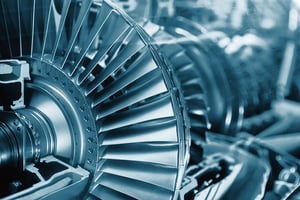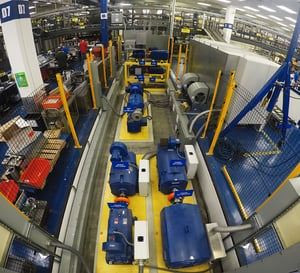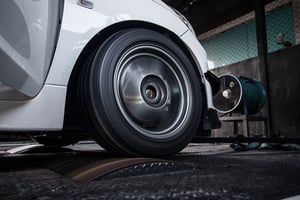 What is a dynamometer? A dynamometer or “dyno” is an instrument designed for measuring power and force. This can be measured in engines and motors as well as other items. This device is able to calculate power by concurrently measuring torque and rotational speed. This allows you to determine the required amount of power that is needed to run a given machine. If you need to know the power requirement essential to drive an engine, you would attach a dynamometer. This would then force a load on the engine, which is then measured to determine the amount of power needed. Other then just mechanical dynamometers these instruments are also used in an array of other areas like emissions testing, medical needs, and rehabilitation. One of the first instruments to be made was the Graham-Desaguliers Dynamometer invented by George Graham, which was made to measure muscular force. Then Froude Ltd. began to manufacture the engine dyno, and the first commercial instruments were established in 1881 by Heenan & Froude.
What is a dynamometer? A dynamometer or “dyno” is an instrument designed for measuring power and force. This can be measured in engines and motors as well as other items. This device is able to calculate power by concurrently measuring torque and rotational speed. This allows you to determine the required amount of power that is needed to run a given machine. If you need to know the power requirement essential to drive an engine, you would attach a dynamometer. This would then force a load on the engine, which is then measured to determine the amount of power needed. Other then just mechanical dynamometers these instruments are also used in an array of other areas like emissions testing, medical needs, and rehabilitation. One of the first instruments to be made was the Graham-Desaguliers Dynamometer invented by George Graham, which was made to measure muscular force. Then Froude Ltd. began to manufacture the engine dyno, and the first commercial instruments were established in 1881 by Heenan & Froude.
 There are different types of dynamometers that serve different purposes. The two main types of dynos are power absorption and power transmission. Power absorbing dynamometers absorb the power that was accumulated and commonly disperses this power as heat. Different examples of these are rope brake, hydraulic, and prony brake dynamometers. The prony brake measures the torque from an engine by connecting a belt to the shaft of an engine. A rope brake also measures the brake power of an engine. In the case of a rope brake, measurement is accomplished through a rope circulating the output shaft. The hydraulic dynamometer differs from the rope and prony brakes by using fluid friction as opposed to dry friction. Power absorption dynos are formed by continuous restraint through either fluid or mechanical friction.
There are different types of dynamometers that serve different purposes. The two main types of dynos are power absorption and power transmission. Power absorbing dynamometers absorb the power that was accumulated and commonly disperses this power as heat. Different examples of these are rope brake, hydraulic, and prony brake dynamometers. The prony brake measures the torque from an engine by connecting a belt to the shaft of an engine. A rope brake also measures the brake power of an engine. In the case of a rope brake, measurement is accomplished through a rope circulating the output shaft. The hydraulic dynamometer differs from the rope and prony brakes by using fluid friction as opposed to dry friction. Power absorption dynos are formed by continuous restraint through either fluid or mechanical friction.
A transmission dynamometer doesn’t absorb any power during its processes. Involved are a set of strain gauges which are used to measure the strain of an object where it is attached. These are located on an oscillating shaft. The torque is determined by the angular deformation of the shaft. Examples here are belt transmission and torsion dynamometers. The belt has a purpose of measuring the differences in the tensions as it rotates. The torsion dyno is installed in a machine where it can transfer power while simultaneously measuring the torque of the machine.
 Factories and manufacturers rely on different types of dynamometers to understand how much power they will need to have. These instruments allow them to see how much power or force is being used at any given time. These dyno instruments come in many different forms and they play a vital and intricate role in determining power, speed, and force.
Factories and manufacturers rely on different types of dynamometers to understand how much power they will need to have. These instruments allow them to see how much power or force is being used at any given time. These dyno instruments come in many different forms and they play a vital and intricate role in determining power, speed, and force.
At Radwell, dynamometers are used to test electrical drives which run motors. As the motor is loaded, it also loads the drive to make sure the drive functions properly under high loads (based on what they are rated for).
For information about how Radwell can assist you with your drives repairs


